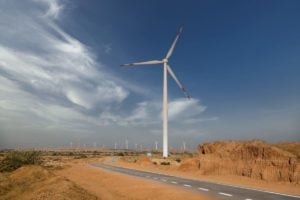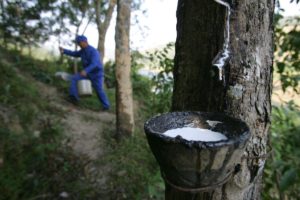Pakistan is in the eye of the storm as far as climate change is concerned. In spite of the fact that we are a very low contributor to the problem, we continue to unjustly suffer as one of the most impacted countries. Last year Pakistan was ingloriously categorised as one of the three countries that have continuously remained in the top 10 list of most impacted countries over the past decade.
From the glaciers to the mangroves, the country cannot afford any hiccups in its continuous struggle to cope with the consequences of climate change, which are increasing in intensity and ferocity.
Against this backdrop, it is no small achievement that Pakistan, over the past four years, has been acknowledged at the global level as a leader on environmental matters. Pakistan was named one of three Global Forestry Champions by the UN Environment Programme; selected as one of four “nature leaders” by the World Economic Forum; chosen to be one of the four pioneer countries in the Asian Development Bank’s Energy Transition Mechanism; and will host the UN World Environment Day 2022. This success did not happen by chance. It was meticulously planned and built upon four foundational pillars.
A vision for climate and nature
Firstly, Pakistan’s climate vision was clear and understandable. It had a two-pronged vision based on developing clean energy and nature-based solutions. Both were driven by quantifiable targets to ensure that these green slogans were backed by on-the-ground implementation that can be transparently monitored. This model was destined for success as long as its delivery was ensured.
Subsequently, the target of shifting 60% of Pakistan’s energy generation to clean zero-carbon energy by 2030 was translated into a flurry of new hydro projects replacing planned imported coal projects. The development of 10 new large dams with hydel energy was initiated and 1,200 MW of wind projects stuck in red tape were started. Similarly, the country’s first electric vehicle (EV) policy was launched to meet the target of achieving 30% electrified transport by 2030.
The path to climate-compatible development needs to transcend election cycles, with continuity sustained across political dividesMalik Amin Aslam Khan
In terms of the second pillar of nature-based solutions, Pakistan truly came out as a global trailblazer with the successful completion of the ‘Billion Tree Tsunami’ in Khyber Pakhtunkhwa province between 2014 and 2018. This was followed up with the ambitious 10 Billion Tree Tsunami Programme across Pakistan, from community-based regeneration of alpine forests and new forest plantations in riverine plains to enhancement of mangroves along the coastline. The country also expanded its protected areas and increased the number of national parks from 30 to 45; developed park management plans; and laid the ground for launching the country’s first national parks service as well as new nature protection laws in the provinces. The ‘Living Rivers’ and ‘Recharge Pakistan’ initiatives are being designed to ensure the restoration of Pakistan’s riverine ecosystems and revive its degraded wetlands.
The second pillar refers to this action-based vision being backed by the highest-level political commitment and resolve. The Prime Minister’s Committee on Climate Change, chaired by Imran Khan with all chief ministers and six relevant ministries, was set up to make decisions on climate-related policies and drive their implementation. This vision for climate security stretched across political divisions, with the government reaching out and partnering with the opposition province – in spirit as well as with supportive funding.
Thirdly, transparency was key to ensuring credibility in the eyes of the global community. While the usual layers of provincial and federal-level audit mechanisms were in place, the initiatives under the climate vision were subjected to an independent third-party evaluation system. In the case of the 10 Billion Tree Tsunami, a consortium of the World Wide Fund for Nature, the International Union for Conservation of Nature and the Food and Agriculture Organization undertook a yearly performance review and audit.
Finally, the initiatives under the climate vision benefitted people. Whether it was generation of green jobs – through plant nurseries, forest protection or national park management – or it was passing on cost savings through EV transition or home solar installations, a clear focus was to keep benefits to people at the centre of all programmes.
Pakistan cannot afford to change path now
Pakistan’s green credentials laid solid foundations for attracting not only global attention but also green financing. Pakistan successfully floated its first green bond of USD 500 million last year, which was six times oversubscribed. The World Bank completed the first ever blue carbon estimation study last year, which provides the basis for launching the country’s future blue bond. Most innovatively, in partnership with the World Bank, Pakistan ventured into nature bonds linked to sovereign debt relaxation and also worked on a scheme for nature policy-based lending (estimated at USD 1 billion) which remains in the final stages of development. Pakistan also became the only country to actually roll out a post-Covid-19 ‘Green Stimulus’ package. It secured financing to the tune of USD 120 million to follow this through on protecting nature and generating green jobs. All this happened due to the momentum built by the four pillars mentioned above.
Given the country’s extreme vulnerability to climate change and its rising and inescapable impacts, Pakistan just cannot afford to alter the globally acknowledged pathway that is now also enshrined in our global obligations (Nationally Determined Contribution).
Pakistan just cannot afford to alter the globally acknowledged pathway that is now also enshrined in our global obligationsMalik Amin Aslam Khan
This path to climate-compatible development needs to transcend election cycles, with continuity sustained across political divides – because governments will come and go but climate change is here to stay. Any reversal, or even slackness, will have not only ecological but also social and economic consequences for Pakistan.
Conversely, consolidating this success can open up new vistas and opportunities by amplifying the country’s global green credentials painstakingly built up over the past four years.









